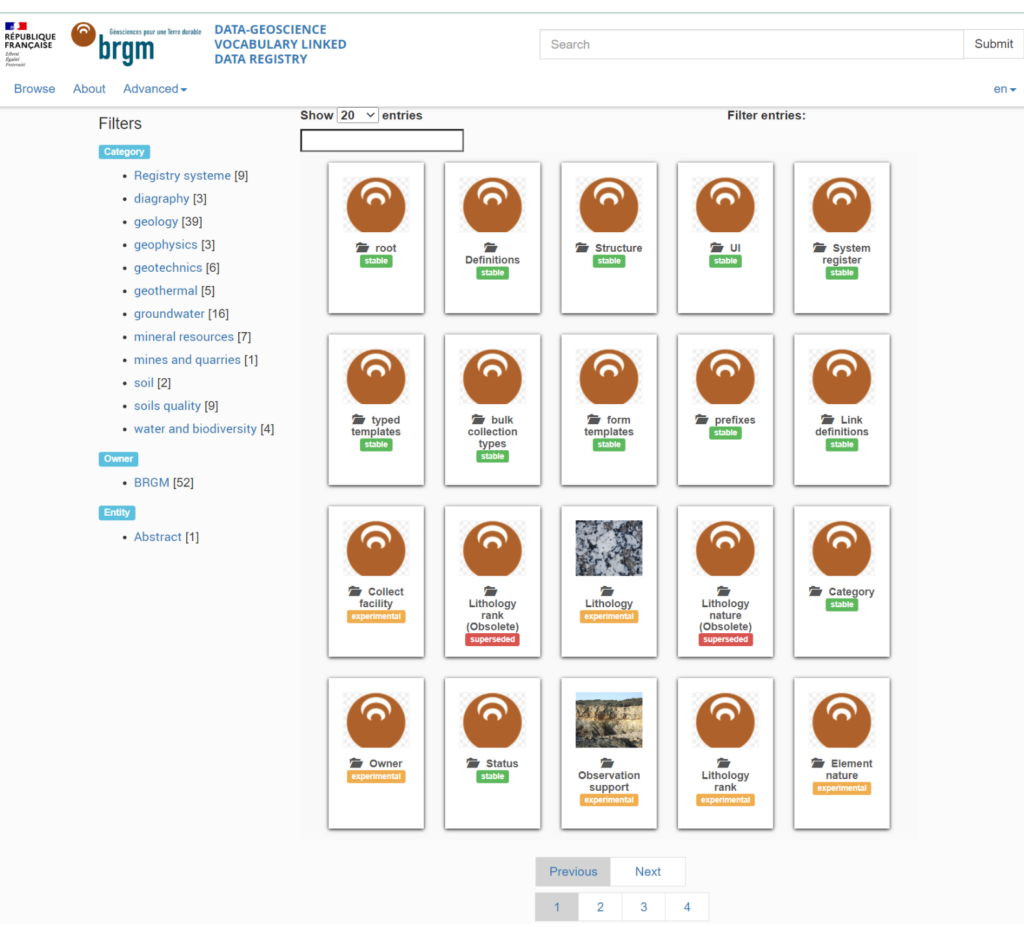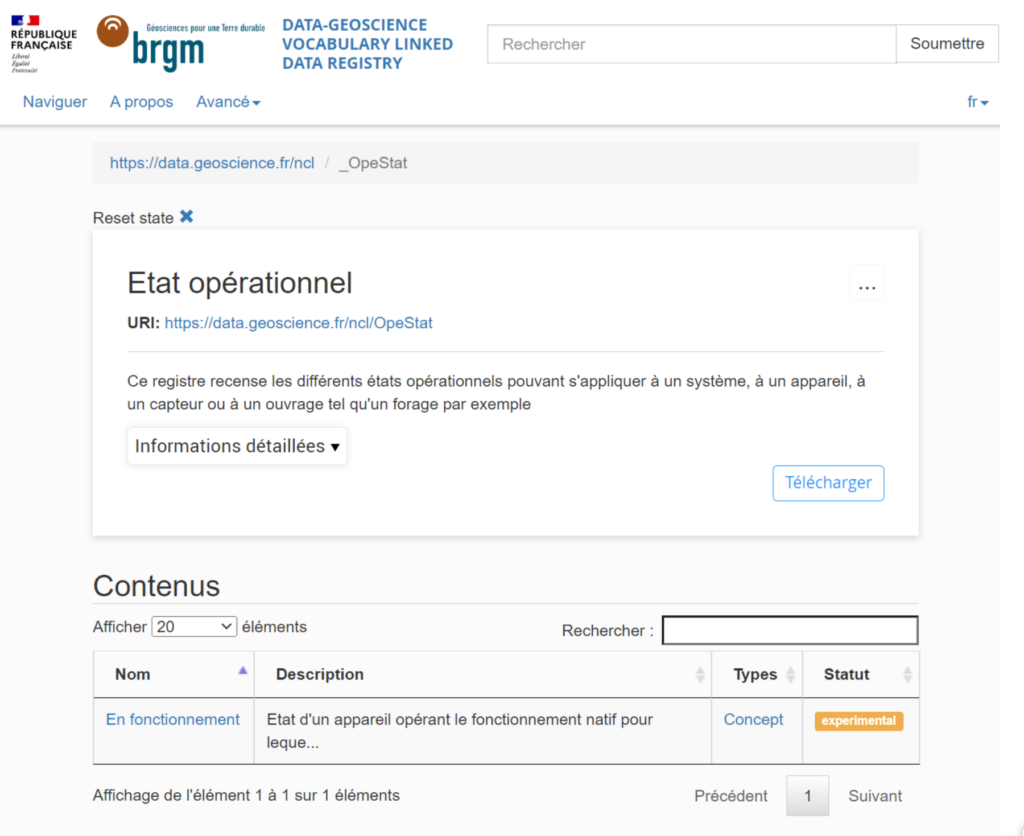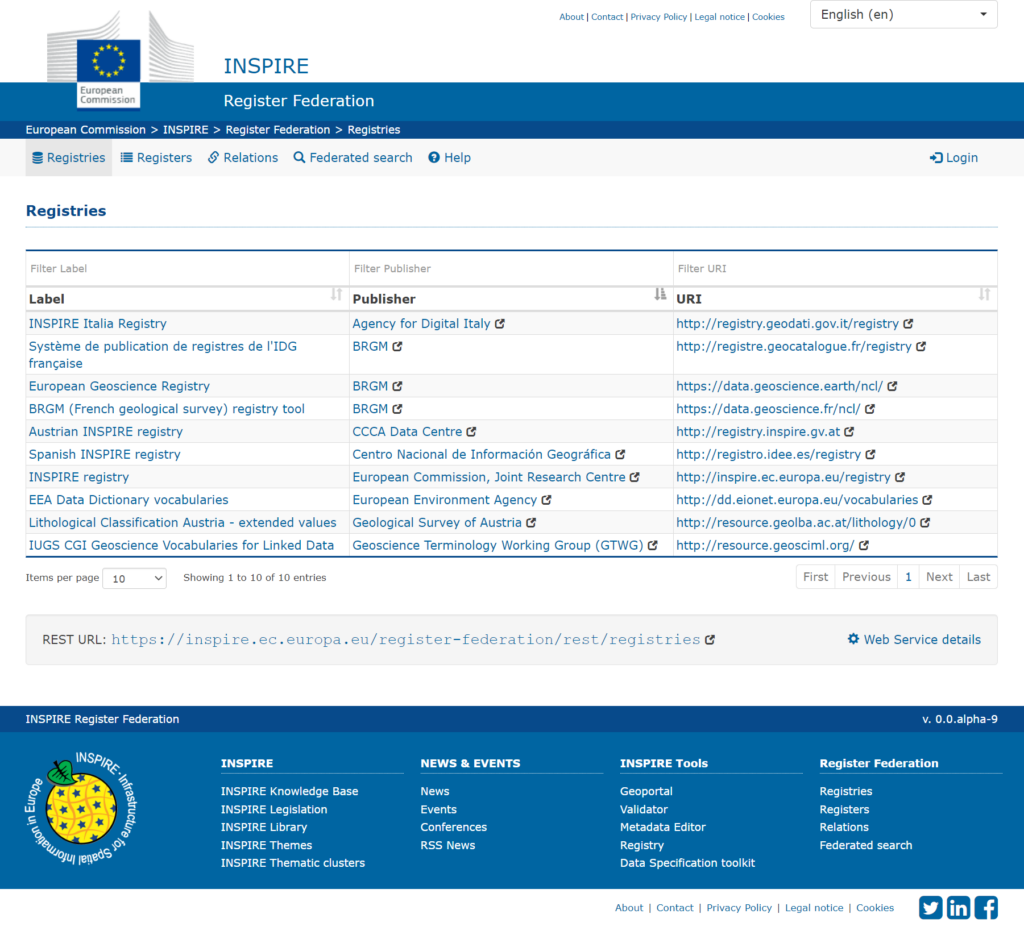Challenge
BRGM are active users of the Open Source Reference Data Management Platform (Registry Core), which they use to publish reference registers for the geosciences in France.
While the original Reference Data Management Platform met most of their requirements, they needed enhancements to help meet some of their specific needs. They included; more flexible workflows, publishing multilingual versions of registries and for the BRGM registry to be conformant with the INSPIRE register federation standards, so that the French national register could join the INSPIRE register federation.

Background & The Enhancements
The BRGM implementation of the Reference Data Management Platform provides a register of reference registers for the geosciences in France.
The registers cover various fields of the discipline of geosciences and aim to:
- Harmonize the data entered and banked at the BRGM: the various applications developed will thus use the same language;
- To offer users a repository to which to relate for their own tools and needs
Each register includes several additional information such as: synonyms, semantic relations (hierarchies, equivalences, genealogies, etc.), as well as other useful information for thematicians such as symmetrical relations and replacements of obsolete terms.
https://data.geoscience.fr/ncl/ui/about
We originally provided consultancy, expertise and development support to BRGM (the French Geological Survey) in their implementation of the Reference Data Management Platform.
Consequently, through their active use of the registry, BRGM identified additional features that would make the registry more effective in meeting their needs. Those included five main parts:
Support for creating and presenting multilingual versions of the registry – BRGM wanted the ability for registers to be multilingual.
This enhancement gives organisations using the registry to flexibly produce multilingual versions of registries in any number of languages. That is done by:
- Enabling the creation and use of language specific templates for the registry webpages
- When the registry contains multilingual (language-tagged) data, dynamically displaying the data contents for the user’s preferred language in the registry UI
- Automatically detecting of the end users’ browser language preferences and/or allowing the user to override their default their preferences in the registry user interface

Customisable workflows/life cycles for registry entries – life cycles represent the status of registry entry, default values were, submitted, experimental, stable status, retired or superseded. The state of an item then specifies in what context it is displayed (or not) in the registry and also what possible next steps there are in the life cycles.
The enhancement gives the ability to have customisable states and flows between states means that organisations can create flows that represent their existing internal processes and/or more effectively meet the needs of the teams creating and maintaining the registry.

Supporting users in spotting possible duplications or mismatches when creating new registry entries – a fundamental issue in maintaining large code lists or vocabularies is the risk of inadvertently duplicating or creating mismatches with existing codes in the registry.
This feature allows the user to check for the existence of similar registry items to those they are creating before they submit their new item. This reduces the risk of such mismatches.
Supporting external notifications of updates to the registry – It is valuable to both registry developers and end users to know when a register or registers have been updated, e.g. entries have been added, edited or deleted.
Previously there was an internal messaging service designed for communicating between the system components and, possibly, to notify registry developers of updates. This enhancement provides a more flexible solution to notify internal and external users as well as developers. It provides a mechanism that enables organisations using the registry, to integrate with 3rd party message broker systems in a standardized way, using a standards based interface and ‘plugin’ approach – see the Registry Core Notifications page for more details
Support for joining the INSPIRE registry federation
The INSPIRE register federation is a Registry of Registries (RoR) of national or community registers supporting INSPIRE geospatial related data. It provides a means to search and browse through the registers included in the federation.
INSPIRE Register Federation specification provides the means to represent and search across a set of federated individual registries, that describes the properties of the registries within a federation, the individual registers within the registries, and relationships between them, so that they can become part of the register federation.
The federation is implemented via the publication of descriptions of the individual registries and registers in RoR (Register of Registers) format.
This enhancement enables the registry to be conformant with the Register Federation specification, so that the French national register could be compliant with that part of the INSPIRE requirements and become part of the INSPIRE register federation. See UKGovLD registry-core Wiki for more information.


